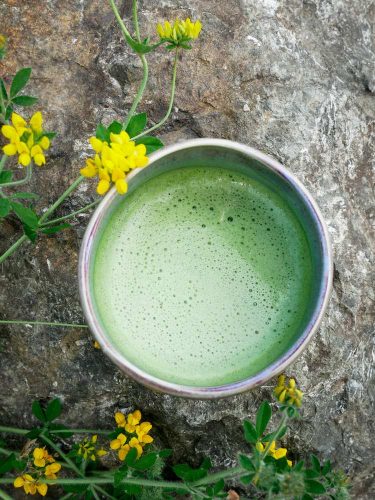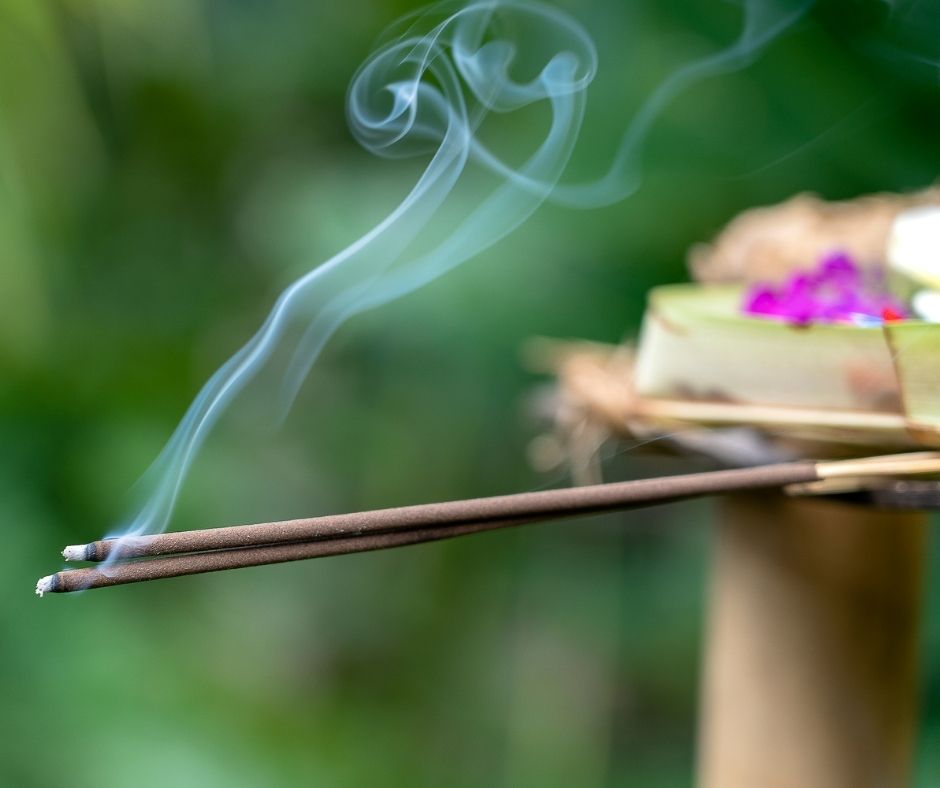Matcha is one of my favorite ingredients, one I have been enjoying regularly for many years. From the farm where the delicate green-tea leaves grow, to the meticulous process of grinding the leaves to create a fine powder, to whisking the perfect cup of tea, matcha is an ingredient that honors all life on our planet. Traditionally enjoyed in Japanese tea ceremony, matcha has gained popularity in recent years across the world for its unique taste, culinary versatility, and abundance of health benefits.
What is matcha?
Matcha is a concentrated form of tea created by grinding green-tea leaves into a delicate, fine powder. When you consume matcha, you are taking in the entire green-tea leaf; this is the main difference between matcha and brewed green tea. Matcha also has a higher level of antioxidants and caffeine than your brewed cup of green tea. Plus, you can easily combine matcha into your favorite recipes for a nourishing wellness boost. There’s so matcha to love about matcha – including the puns!
What are the benefits?
- Focused energy: Matcha contains about two-thirds the amount of caffeine as a cup of coffee. What is unique about matcha is that it also contains L-theanine, a calming amino acid. The combination of caffeine and L-theanine in matcha produces an energized-yet-calming sensation for a focused-yet-grounded experience.
- Antioxidants: Matcha is rich in a group of antioxidants called Catechins, particularly Epigallocatechin gallate (EGCG), which benefits the skin, metabolism, immunity, and more.
(Find more information about the benefits of drinking matcha here.)
How do I choose the best matcha?
If you will be drinking your matcha mainly as a tea, I recommend choosing an organic, ceremonial-grade matcha, grown in Japan for the purest taste. This grade of matcha is harvested in the early spring, when the green tea leaves are young and tender. Quality, ceremonial-grade matcha will be a bright, vibrant shade of green and will not taste bitter. The flavor is smooth and delicate.
If you will be drinking lattes, smoothies, or baking with your matcha, you may like a more standard or culinary-grade organic matcha. These grades are harvested later in the spring and summer, so the leaves have been exposed to more sunlight. This produces a stronger-tasting matcha that will come through well in your lattes, smoothies, and baking. The delicate flavor of ceremonial-grade matcha may be lost in these recipes. For this reason, I like to save my ceremonial-grade matcha for drinking pure tea and use a culinary-grade matcha for my green smoothies and desserts.
How do I prepare it?
There are so many different and interesting ways to use matcha powder. The consistency of the powder makes it so versatile and easy to combine with water, milk, smoothies, or your favorite culinary dishes.

Ceremonial Matcha Tea Recipe
One of my favorite ways to prepare matcha is ceremonial-whisked tea. For this, you will need 1 tsp ceremonial-grade matcha and 5 oz hot water (160 degrees or not boiling). It’s important that the water is not extremely hot, as the high temperature can burn the delicate powder, which causes bitterness and may lower the antioxidant benefits. If you do not have a temperature-controlled kettle, you can simmer the water first and let it cool for a few minutes. You will also need a bamboo whisk or an electric hand frother to fully disperse the powder and create a nice froth.
Ingredients
1 tsp organic ceremonial-grade matcha
5 oz hot water (160 degrees or not boiling)
Directions
- Place the matcha into a matcha bowl. (Optional: use a sifter to remove clumps.)
- Pour the hot water into the bowl.
- Hold the whisk directly above the matcha bowl.
- Circle the whisk around the bowl a few times to gently disperse the powder.
- Begin whisking back and forth vigorously. (Use your wrist and not your arm. Relax your jaw and shoulders; breathe.)
- Once a froth begins to form, slow the movement down into a zig-zag or W-shaped pattern.
- Complete your whisking with a slow and gentle circle around the entire bowl.
Notes
- To extend the life of your whisk, try not to scratch the bottom of the matcha bowl with the bamboo whisk. (Here’s a helpful, how-to video.)

Matcha Affogato with Summer Fruit Recipe
Ingredients
1 tsp organic matcha (any grade)
2-3 oz hot water (160 degrees or not boiling)
1-2 scoops vanilla ice cream* (dairy or non-dairy)
Handful of fresh strawberries or other seasonal fruit** (optional)
Directions
- Whisk together the matcha and water, using a bamboo whisk or electric frother.
- In a separate bowl or cup, add 1-2 scoops of vanilla ice cream.
- Add fresh-cut strawberries or jam over the ice cream.
- Pour the whisked matcha over ice cream, and enjoy!
Notes
- *Vanilla oat milk ice cream works great for this recipe.
- **Jam also works really well as an alternative to fruit.














